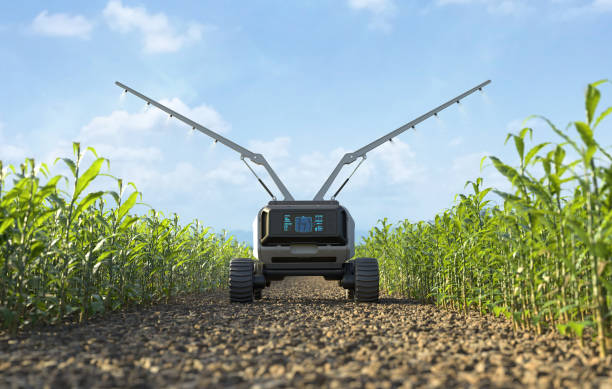Farmers today face a perfect storm of challenges: skyrocketing input costs, unpredictable weather patterns, and the growing threat of climate change. In this context, precision agriculture has emerged as a game-changer, offering innovative solutions to optimize resources, reduce costs, and improve resilience. This article explores how precision agriculture technologies are helping farmers tackle these challenges, with real-world examples and data to illustrate their impact.
1. The Challenges Farmers Face
- Rising Input Costs: Fertilizer, fuel, and seed prices have surged in recent years, squeezing profit margins.
- Climate Challenges: Erratic weather, droughts, and floods are becoming more frequent, threatening crop yields.
- Sustainability Pressure: Consumers and regulators are demanding more environmentally friendly farming practices.
2. What is Precision Agriculture?
Precision agriculture uses advanced technologies like GPS, IoT sensors, drones, and AI to monitor and manage farming operations with pinpoint accuracy. By collecting and analyzing data, farmers can make informed decisions that optimize inputs, reduce waste, and increase productivity.
3. How Precision Agriculture Addresses Rising Input Costs
Variable-Rate Technology (VRT)
- What It Is: VRT allows farmers to apply inputs (fertilizers, pesticides, water) at variable rates across a field, based on real-time data.
- Example: The John Deere ExactApply™ Sprayer uses VRT to reduce chemical use by up to 30%, saving farmers thousands of dollars annually.
- Impact: A study by the University of Nebraska found that VRT can reduce fertilizer costs by 10-20% while maintaining or even increasing yields.
Automated Machinery
- What It Is: Self-driving tractors and harvesters equipped with GPS and AI can perform tasks with minimal human intervention.
- Example: The Case IH Autonomous Concept Vehicle can operate 24/7, reducing labor costs and fuel consumption by 15%.
- Impact: Automated machinery not only cuts costs but also improves efficiency, allowing farmers to cover more ground in less time.
Soil and Crop Monitoring
- What It Is: IoT sensors and drones collect data on soil moisture, nutrient levels, and crop health.
- Example: The Trimble Soil Information System provides detailed soil maps, helping farmers apply fertilizers more precisely.
- Impact: According to a report by the USDA, precision soil monitoring can reduce fertilizer use by 20-40%, saving farmers an average of $50 per acre.
4. How Precision Agriculture Tackles Climate Challenges
A. Weather Forecasting and Risk Management
- What It Is: Advanced weather models and satellite data help farmers anticipate and mitigate climate risks.
- Example: The Climate FieldView™ platform provides hyper-local weather forecasts and field-specific insights.
- Impact: Farmers using Climate FieldView™ report a 10-15% increase in yields due to better risk management.
Water Management
- What It Is: Precision irrigation systems deliver water only where and when it’s needed.
- Example: The Valley® Precision Irrigation System reduces water use by up to 25% while maintaining crop health.
- Impact: In drought-prone regions like California, precision irrigation has helped farmers reduce water consumption by 30-50%.
Carbon Sequestration and Sustainability
- What It Is: Precision agriculture supports practices like no-till farming and cover cropping, which enhance soil health and sequester carbon.
- Example: The John Deere Operations Center tracks carbon emissions and helps farmers participate in carbon credit programs.
- Impact: A study by the Rodale Institute found that regenerative practices enabled by precision agriculture can sequester up to 2 tons of carbon per acre annually.
5. Real-World Success Stories
- Case Study 1: A soybean farmer in Iowa used VRT and soil monitoring to reduce fertilizer costs by $12,000 in a single season while increasing yields by 8%.
- Case Study 2: A vineyard in California adopted precision irrigation and weather forecasting, cutting water use by 40% and saving $20,000 annually.
6. The Future of Precision Agriculture
- Emerging Technologies: AI-powered drones, blockchain for supply chain transparency, and gene-edited crops are set to revolutionize farming further.
- Barriers to Adoption: High upfront costs and lack of technical expertise remain challenges, but government subsidies and training programs are helping bridge the gap.
Conclusion
Precision agriculture is no longer a luxury—it’s a necessity for farmers navigating rising input costs and climate challenges. By leveraging advanced technologies, farmers can optimize resources, reduce costs, and build resilience against an uncertain future. The time to embrace precision agriculture is now.
FAQs
- What is the ROI of precision agriculture?
- Most farmers see a return on investment within 2-3 years through reduced input costs and increased yields.
- Is precision agriculture suitable for small farms?
- Yes, scalable solutions like soil sensors and mobile apps make precision agriculture accessible to farms of all sizes.
- How does precision agriculture help the environment?
- By reducing chemical use, conserving water, and promoting sustainable practices, precision agriculture minimizes the environmental impact of farming.

